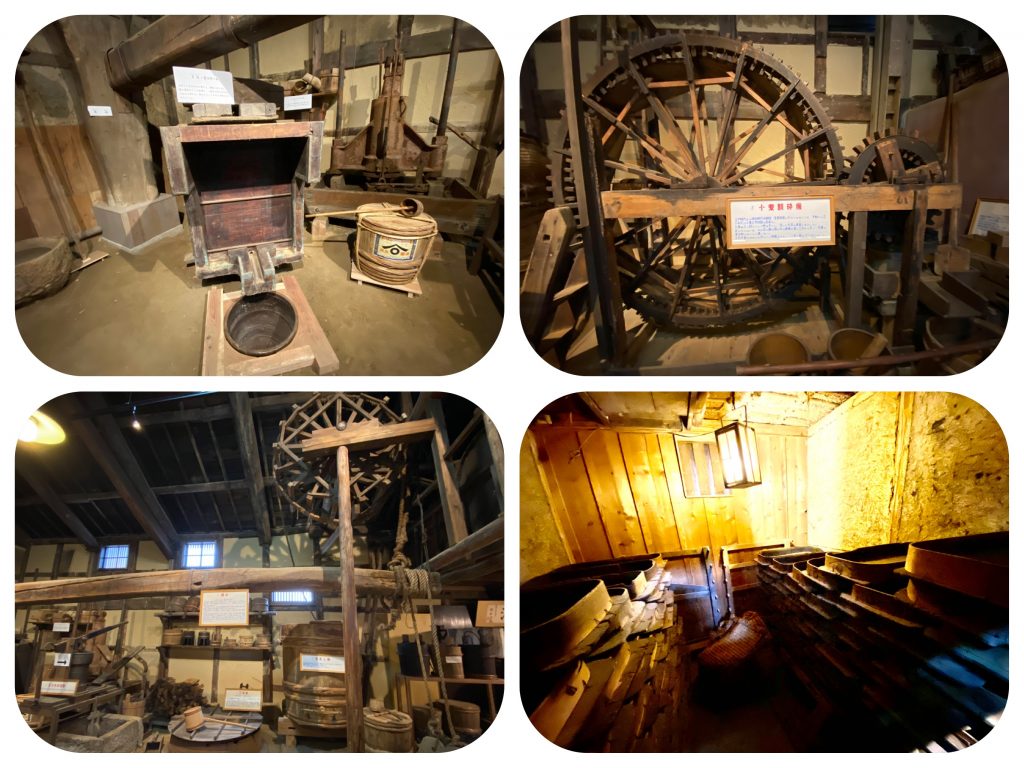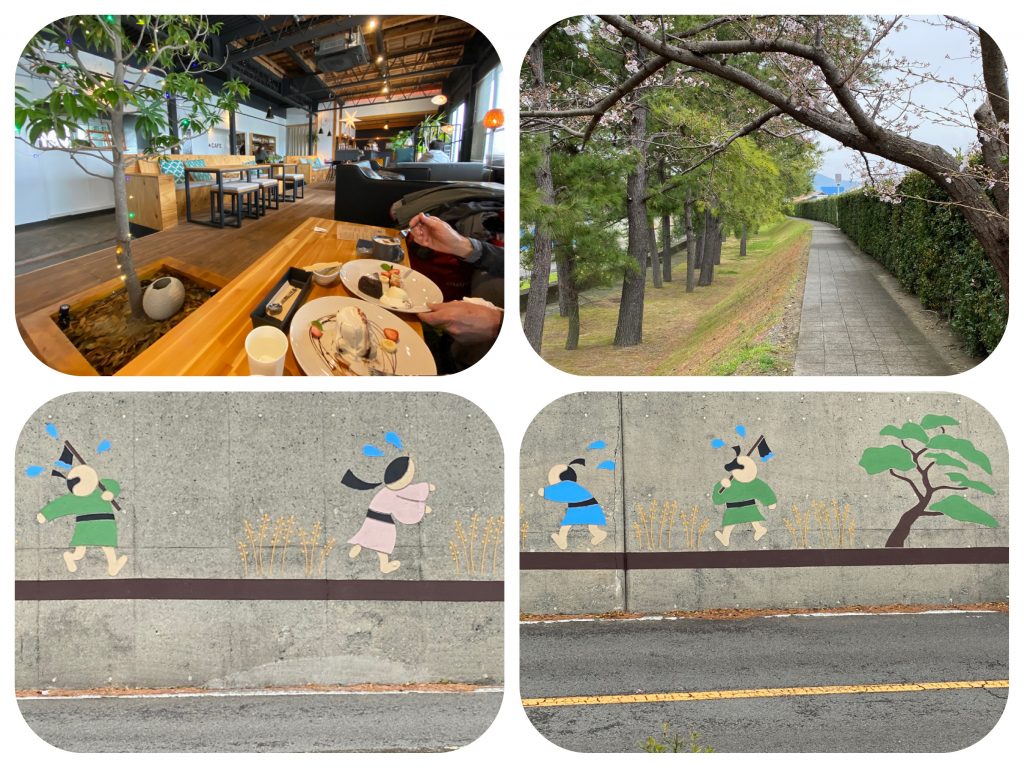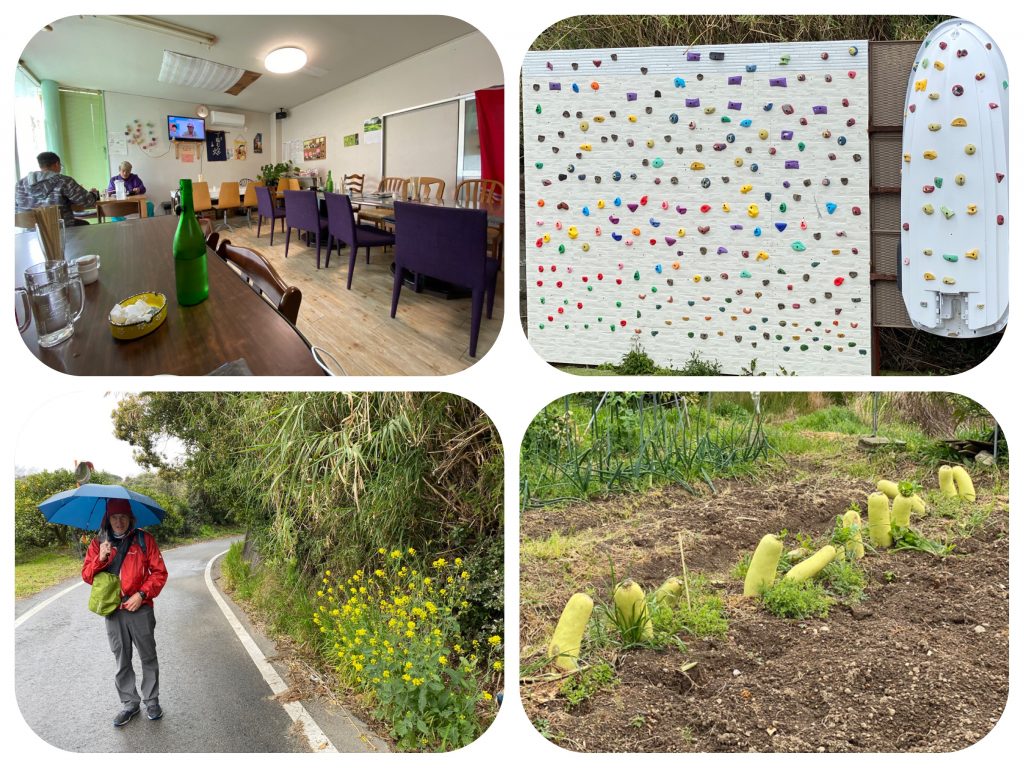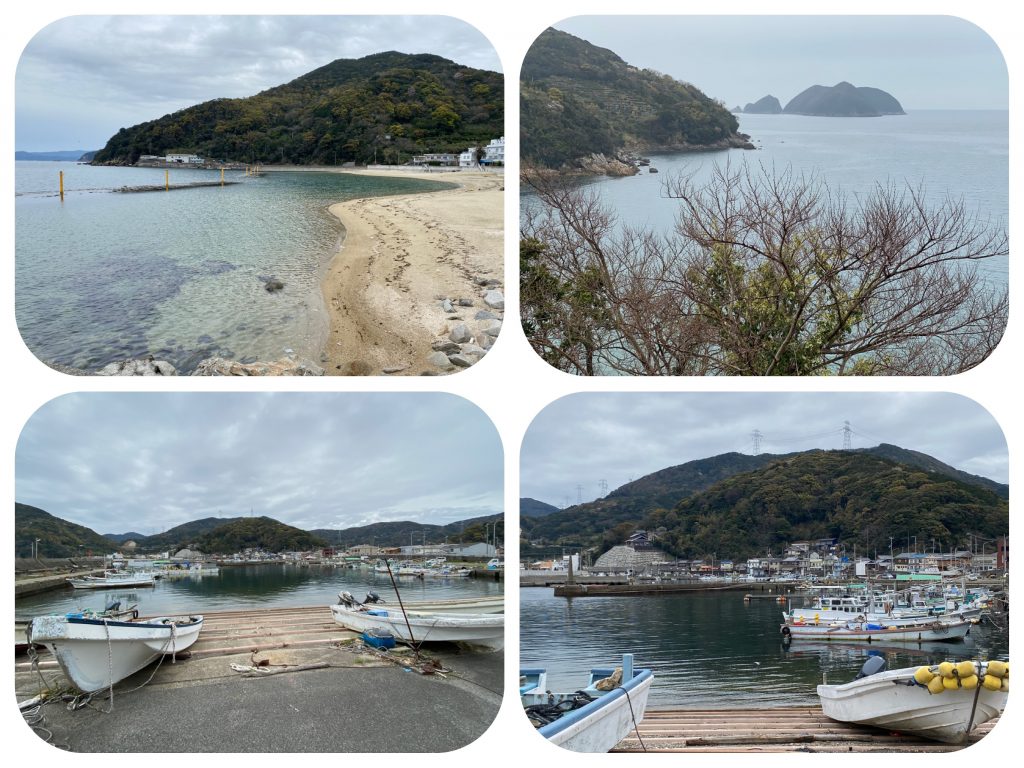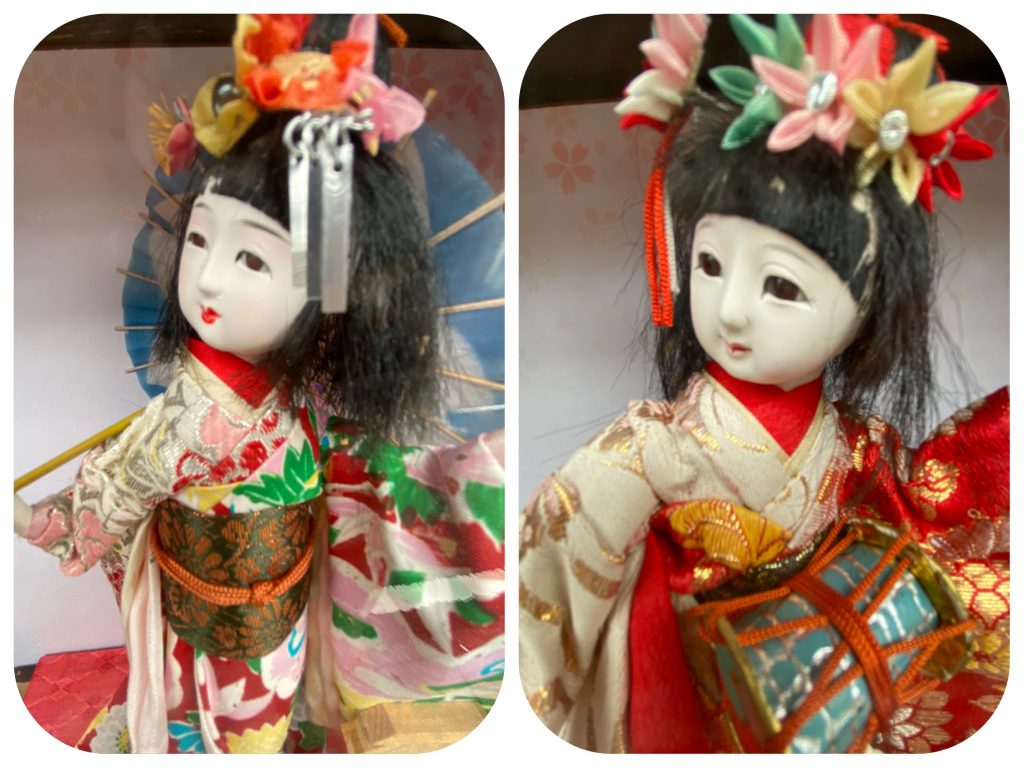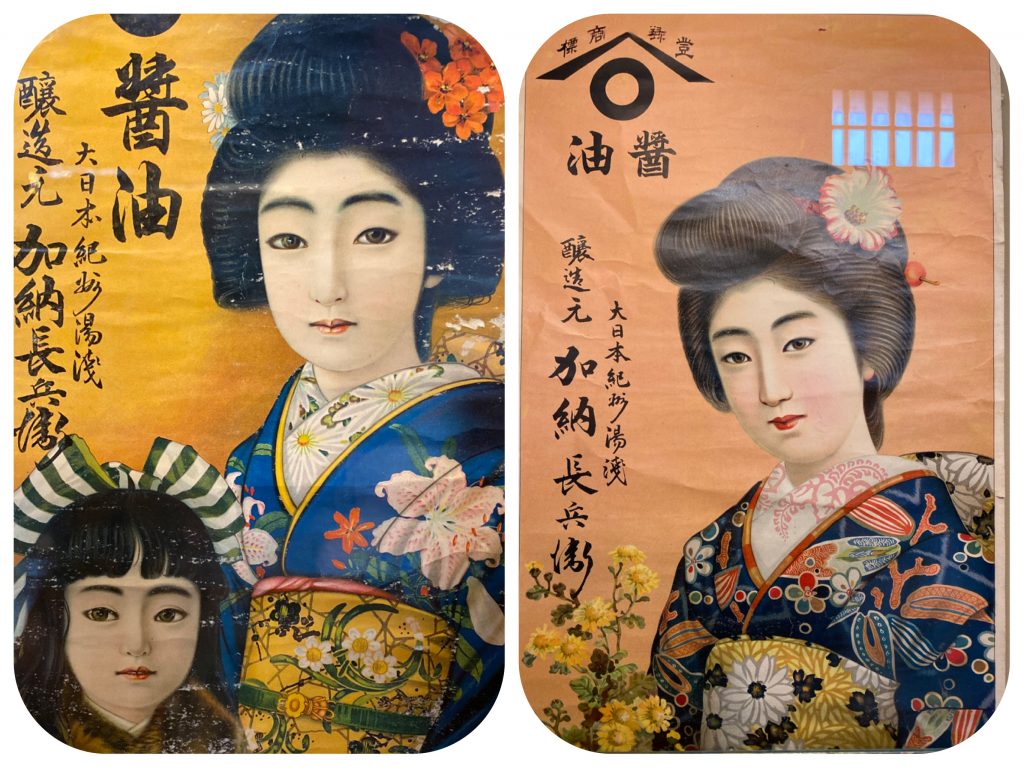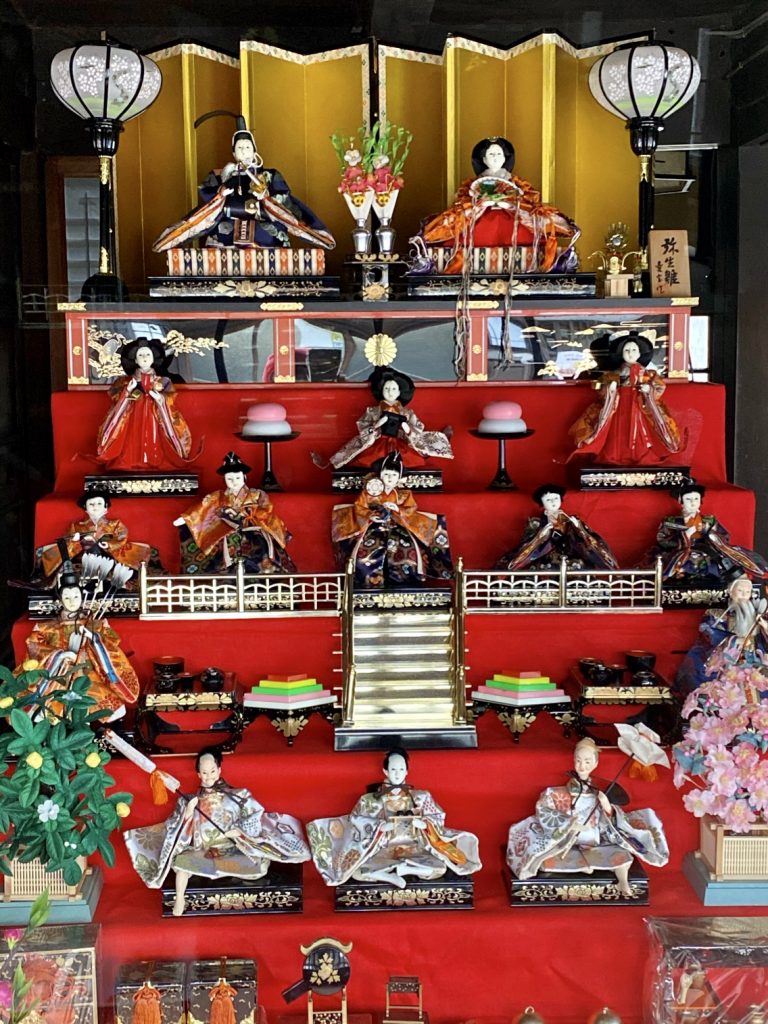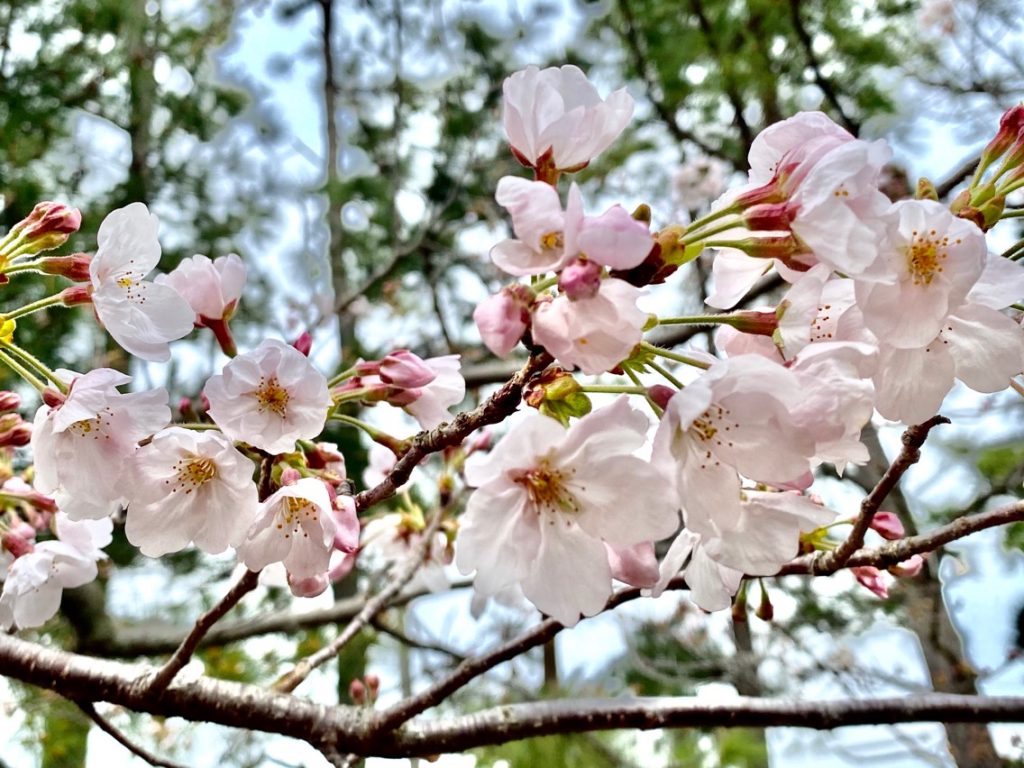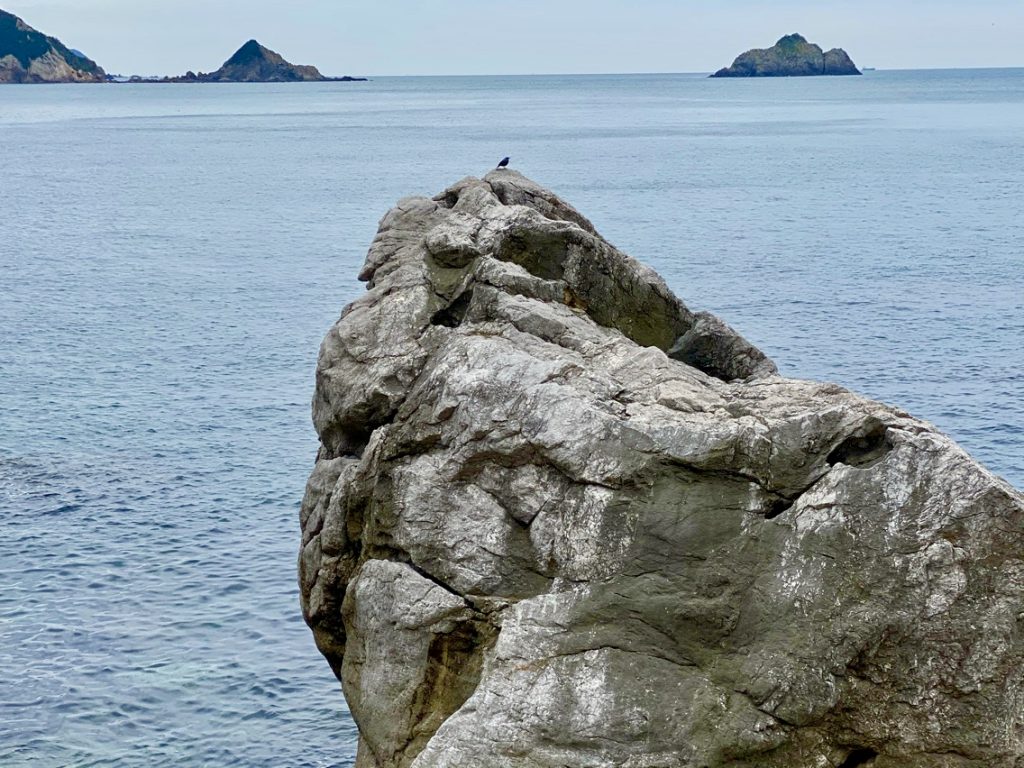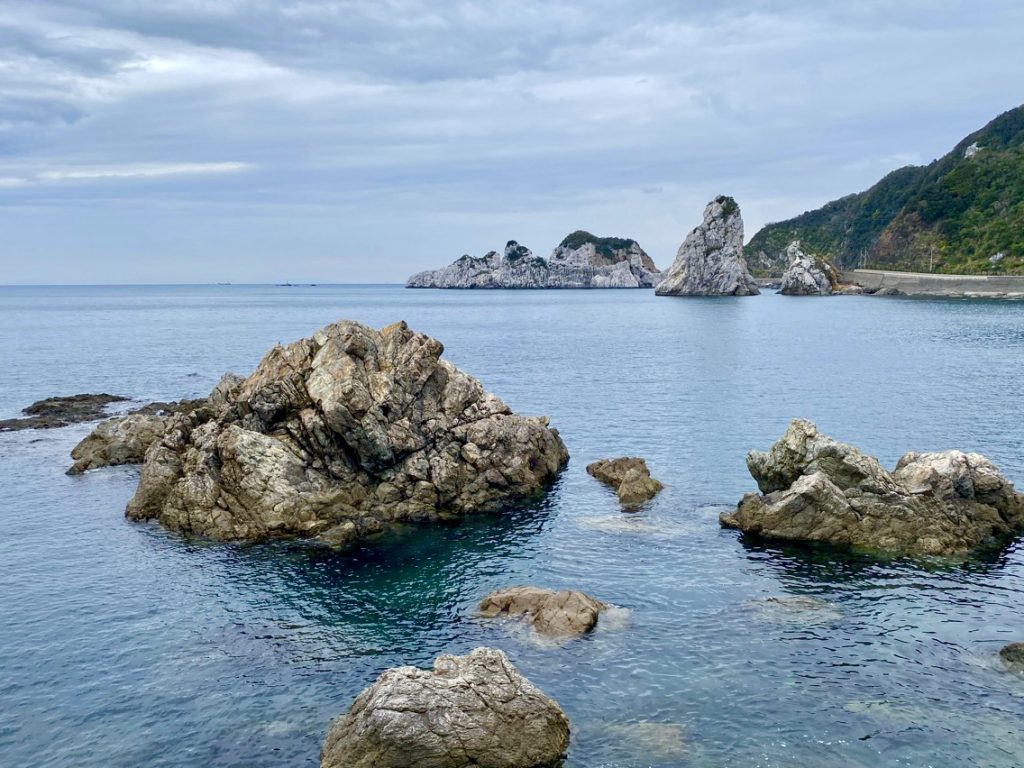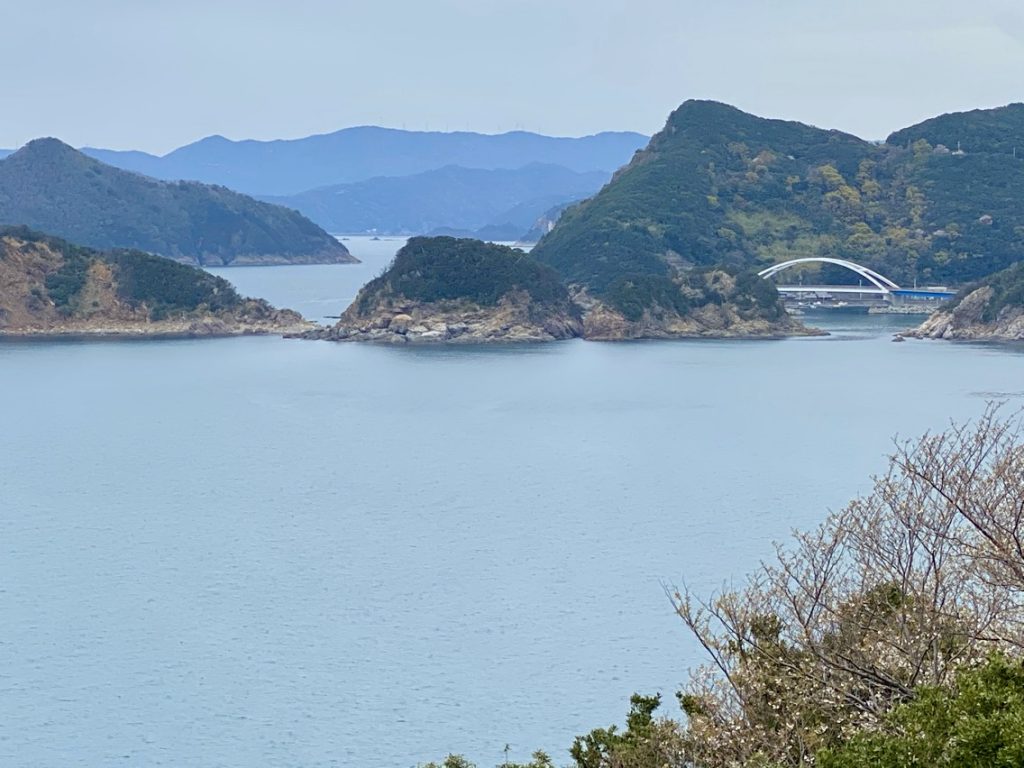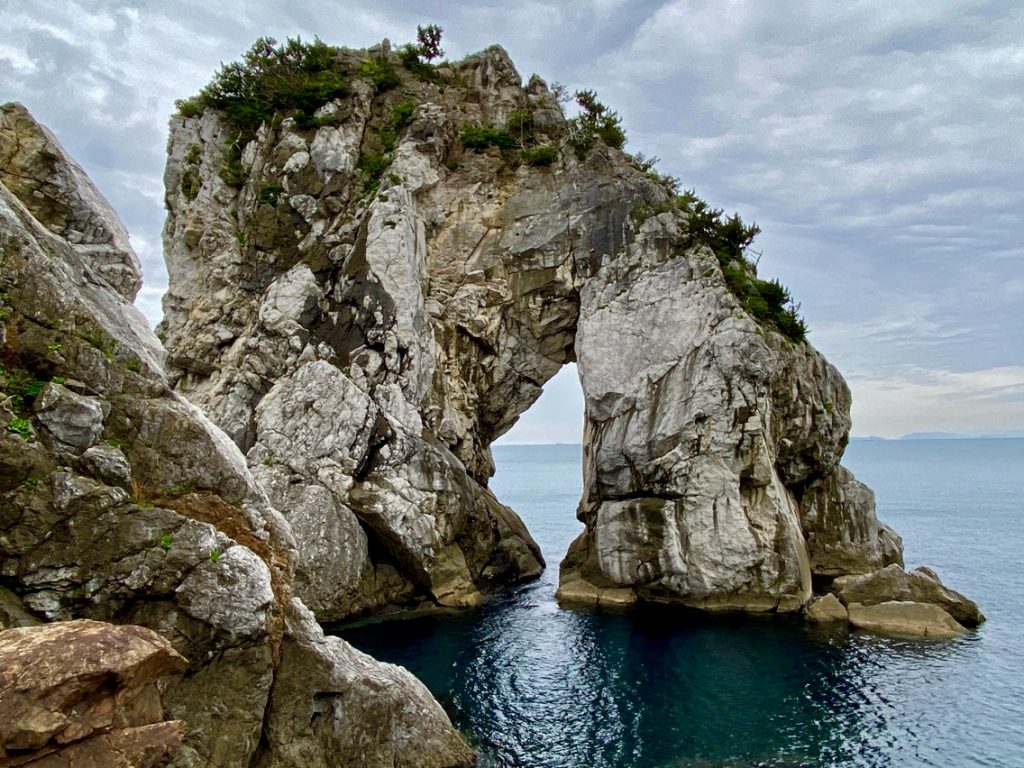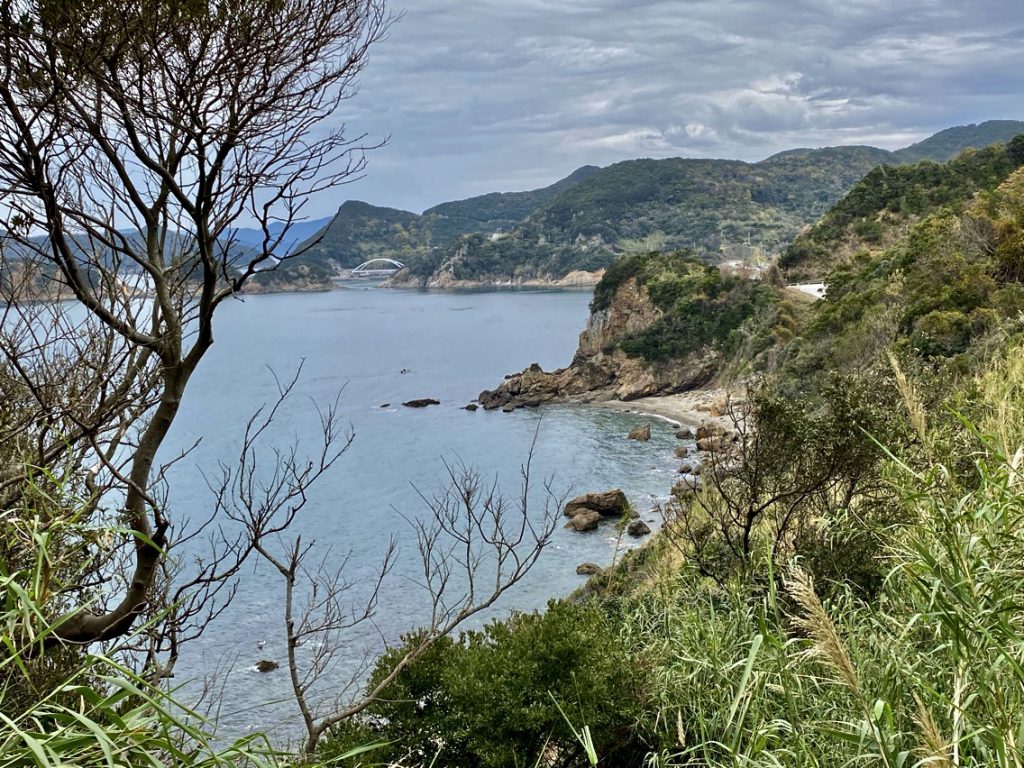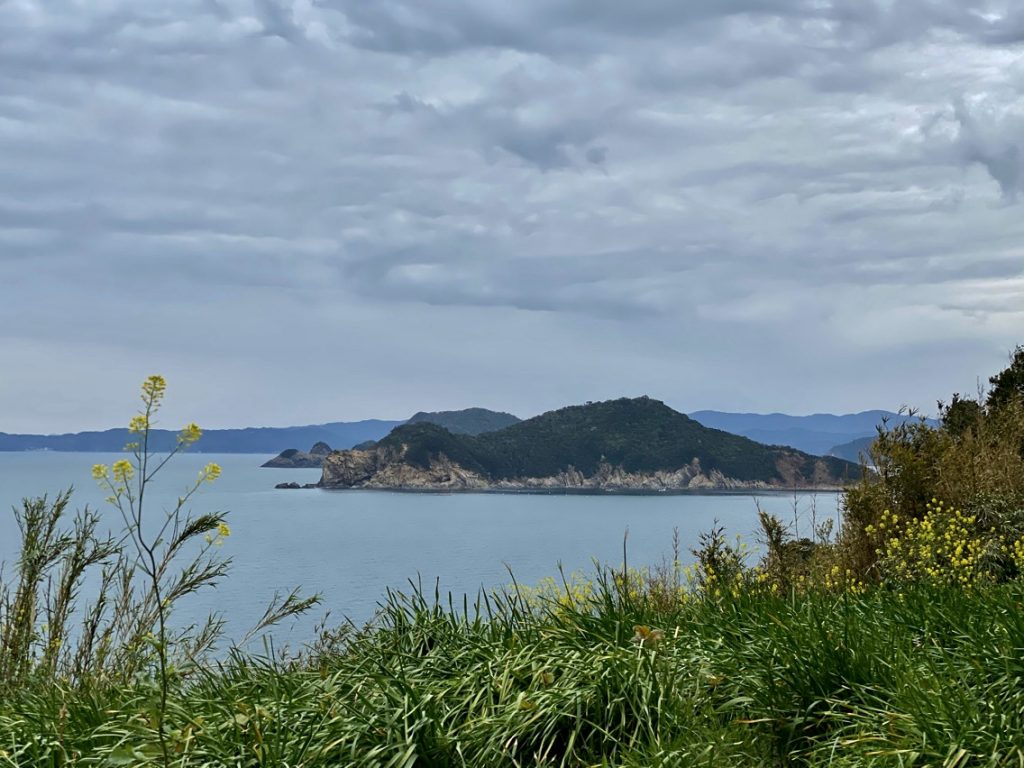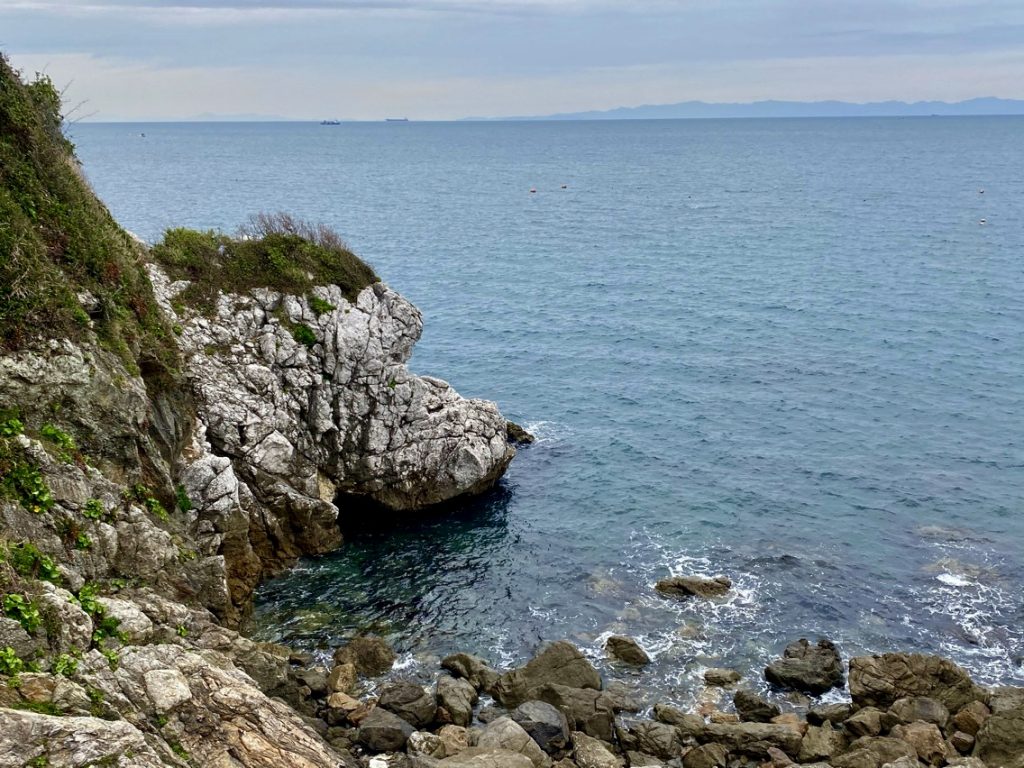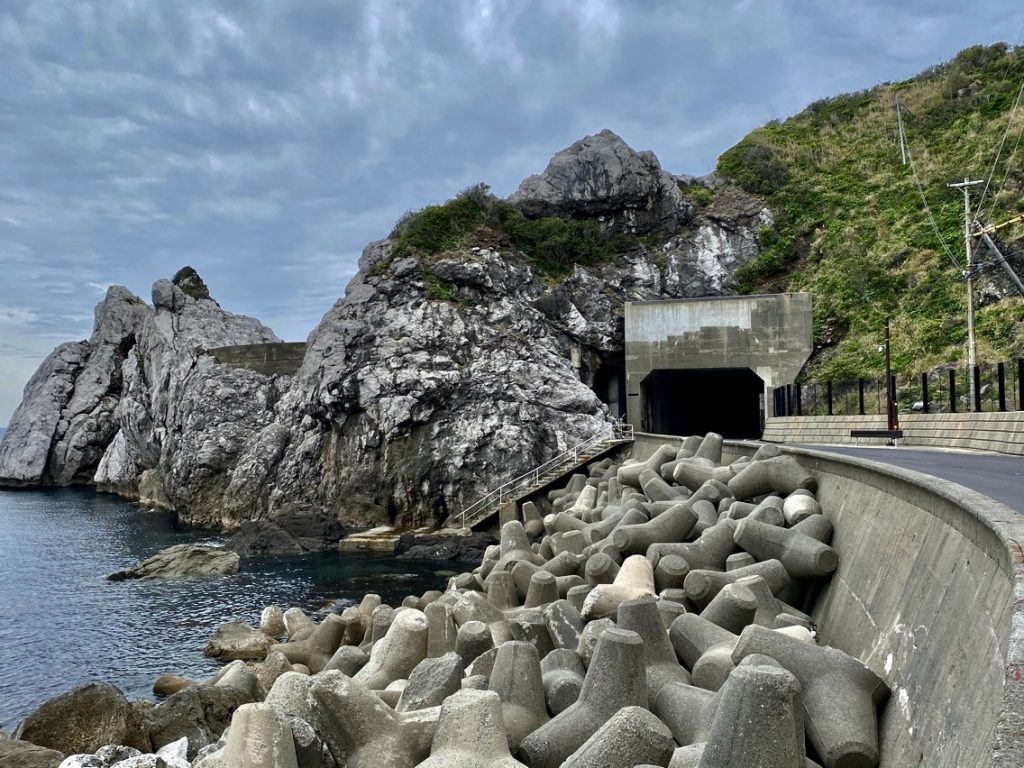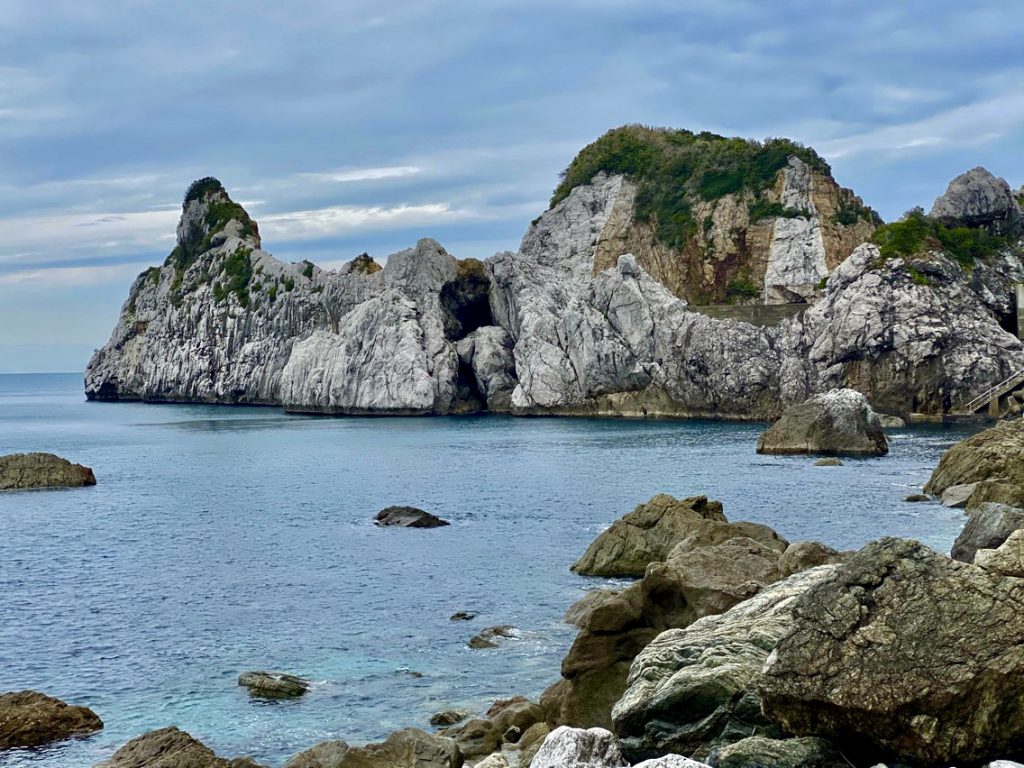Day 13 - The Road To Enlightenment - Walking The Saigoku Kannon Pilgrimage - Shirasaki, Obiki To Hatsushima, Arida, Wakayama, Japan

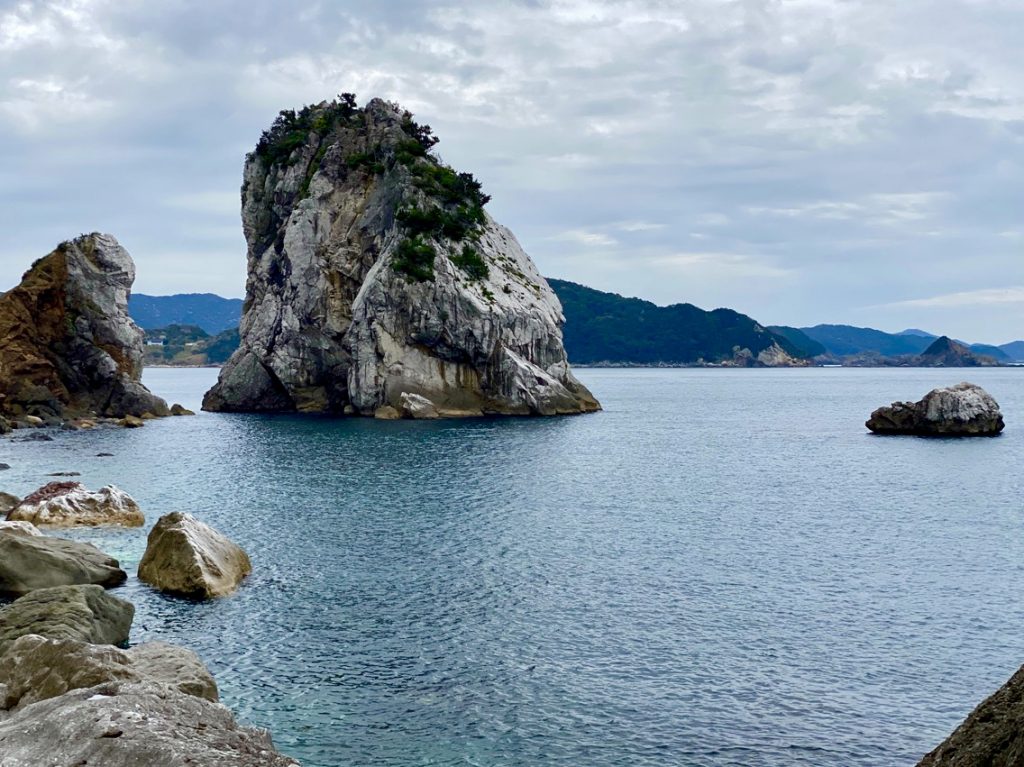
Day 13 - The Road To Enlightenment - Walking The Saigoku Kannon Pilgrimage - Shirasaki, Obiki To Hatsushima, Arida, Wakayama, Japan
We were the only guests staying in our hotel last night.
The hotel is run by one woman, who is really sweet and kind hearted, but she cannot keep up with the maintenance and the cleaning of such a large building all by herself.
As a result, what once was a lovely oceanfront place, is now leaking, run down and standing mostly empty.
I hope that she does not feel lonely and eerie, living there all by herself.
But for us it was a comfortable overnight stay on our pilgrimage route.
We had plenty of hot water and a hot bath, we did our laundry and had a kitchen to warm up the food that we had brought with us, since the village has no restaurants.
The suite was very spacious and well heated with two room units, one in the living room and one in the bedroom.
We had beautiful ocean views from every window.
The owner prepared our breakfast in an empty suite below us.
We ate, packed our backpacks, thanked her and started our day’s walk early.
It was a chilly morning, and rain was predicted for the entire day.
The coastline was truly stunning, with huge rocks and small rocky atolls.
There were almost no cars on the road, which made walking through the few small tunnels very easy.
We were amazed at how much road work and retaining of both the sea and the cliffs were being done in the area.
The area is very rural, with tiny fishing villages, but the Japanese government obviously cares and allocates large sums of money for public works in these areas.
As we walked, a car driven by a young man spotted us walking and the driver gave us the thumbs up.
A young man on a bicycle stopped to practice his English, and later cycled by us again farther down the road, wishing us a safe journey.
We had planned to take a break in a cafe that opens at noontime.
We saw that needed to slow down, in order to get there by noon, and not earlier.
Right before the road climbed away from the coastline into the mountains, we took a tea break in a fishing port.
Sitting on the seawall, we prepared our tea from the hot water I had boiled that morning and brought in our tea flasks.
It started raining during our tea break, and we quickly packed up our bags and started walking, this time with umbrellas and raincoats.
The hills were full of blooming cherry tree and citrus fruit, mostly local oranges, some neatly wrapped in black wraps.
I nodded to the farmers who nodded back at me.
The smell of the sea, the fruit and the flowers was divine.
When we arrived at the cafe, it was closed.
The cafe was on the second floor of an old auto garage, but there were no lights and no owner around.
Instead, we walked a bit farther to the only restaurant in that village.
It was a simple lunch place, set up in the front part of a lady’s home.
She prepared a set lunch menu that included a pan fried mackerel, rice, miso soup with lots of seaweed, pickles and three kinds of small vegetable dishes.
Her place was popular among local workers, who came in wearing overalls and who smoked indoors.
We had some tea and enjoyed her food and talking to her.
We hoped that none of the constantly coughing men were sick, and that their coughs were the result of constant smoking and evenings of beer and Sake drinking.
I tried not to judge these men who cared so little about their own health and filled their precious bodies with poisonous smoke, and instead smiled at them warmly.
On the TV, the prime minister, Abe, was giving a live talk.
We did not understand the speech, but we read the news and learned that he had just banned Americans from entering Japan.
It is not going to be easy to be a foreigner in Japan right now...
The lady who cooked our food was super friendly, and she talked about our pilgrimage and about the temple we will visit tomorrow, and asked to take our photos before we left.
After a few more hours of walking, we stopped again in a cafe, this time a renovated boat-shed right on the marina.
The cafe was cool, with sofas and a good menu, but the owner wore a face mask and seemed scared of her customers.
We decided to take a detour to visit the historic town of Yuasa.
It is here that the soy sauce and miso production first took place, after it was imported from China by the monk from Kokokuji.
The town still has some historical buildings, with traditional wood design and mud brick walls. In some places, it is still possible to smell the shoyū .
There is a soy sauce museum filled with traditional wooden presses, water mills, fermentation vats and tools.
There are also a few small shops selling high end soy sauce and miso made by traditional methods.
At one time, there were 92 soy sauce manufacturers in Yuasa.
They were closed or relocated by the Meiji government.
The narrow streets were charming, and as we strolled, we talked about not allowing recent developments to scare us or stress us.
For every scared and unfriendly person, we have met five people who were super kind and friendly.
We arrived in the town of Hatsushima, and walked the narrow streets to find our guesthouse.
The owners had prepared our room with fresh yukatas, the futon bedding was already laid out and the men’s hot bath was ready.
I am the only woman in the guesthouse, and they quickly cleaned and filled my bath.
We arranged for our dinner with them, instead of going out to eat in a local Izakaya.
They offer three kinds of Kaiseki dinners, all very elaborate and expensive.
But when I said that it was too expensive, they agreed to give us a smaller kaiseki at $15 each, the price that they usually charge for their lunch menu.
It was a good Kaiseki dinner, of cooked, fried, raw and grilled food.
The night staff was super friendly, and told us they have family in Chicago.
That night I prayed for the coronavirus madness to end soon.
The news had another story about Sweden, and why they did not close their borders nor impose any quarantine on their people.
I thought it was interesting, that on the first and only weekend when they asked people in Tokyo to stay indoors, there was the biggest spike yet in coronavirus cases.
I am not sure that the government will see the correlation.
Perhaps they will think that the numbers would have been even higher, if people had walked the streets with no restrictions.
With light and love,
Tali
Daily stats:
Steps walked - 34,997
26 km. walked
Active walking time - 6.5 hours
Total walking time today - 8.5 hours.
Total walking distance on the Saigoku to date - 236 km
Temple Visited:
None.




